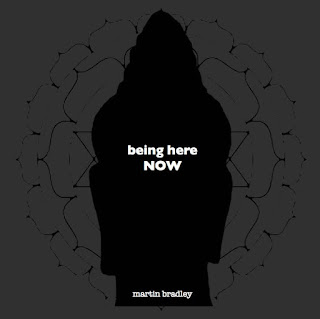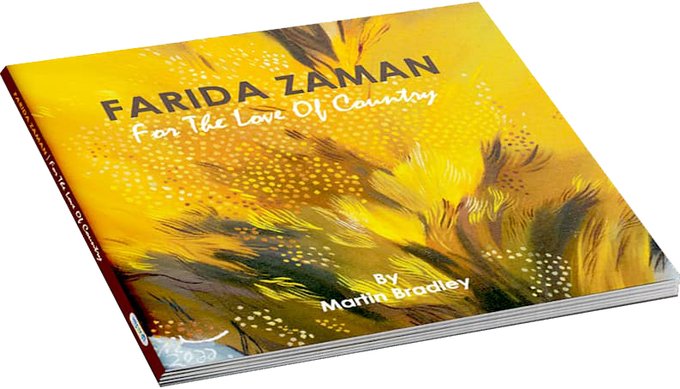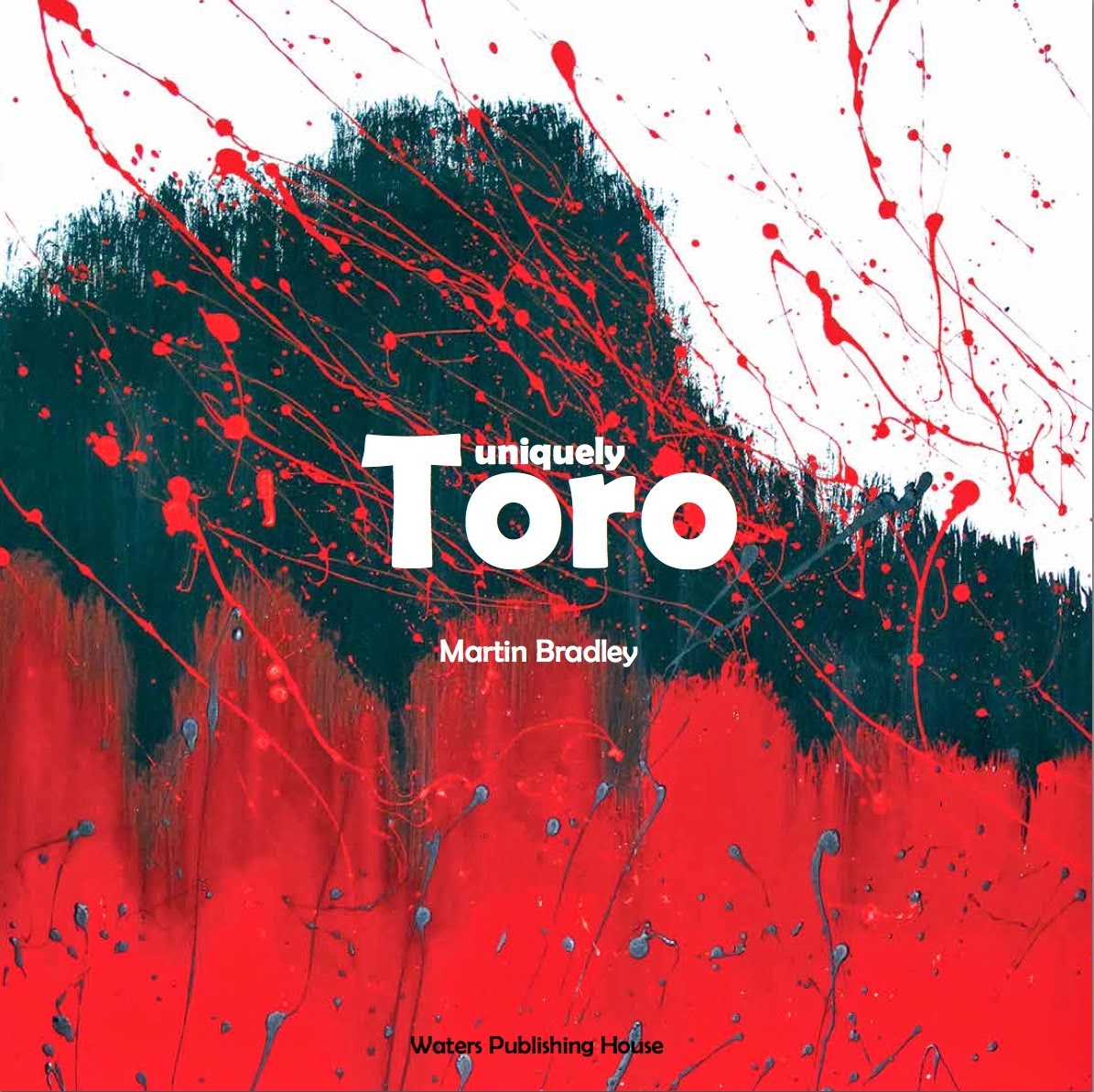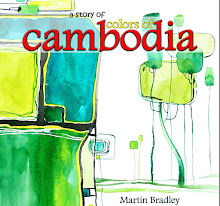https://issuu.com/martinabradley/docs/cambodia_chill_re-issue
Thursday 31 December 2020
Monday 28 December 2020
Marriage & Mutton Curry by M. Shanmughalingam: A review
When I first knew of M. Shanmughalingam’s title for this volume of short stories, a huge grin widened my mouth. I involuntarily drooled. One of the best curries that I’ve ever experienced was in the home of a migrant Sri Lankan family, living on the outskirts of London, England. The curry was (of course) ‘mutton curry’, however the ‘mutton’ referred to in that instant was in fact goat, for in many Sri Lankan families ‘mutton’ means goat. The meat was cut small and the curry (gravy) was steeped in spices and quite deliciously amazing. In ‘Marriage & Mutton Curry’, the ‘mutton’ is lamb (pronounced lamp by ‘Chelvi’ one of the author’s endearing characters), bought from a local Kuala Lumpur market.
I would very much have liked to compare the two curries, perhaps with thosai (Dosa) or hoppers (appam). But Shanmughalingam doesn’t stop at mutton curry. Chicken curry (with potatoes) crab curry (with string hoppers, aka Idiyappam) “curries of mashed brinjals and lady’s finger” curry with roti chennai and fish curry all grace this collection of short stories, making you feel quite full having read until end of the book.
Like India’s great narrator R.K.Narayan and his Tamil lands, Shanmughalingam, in ‘Marriage & Mutton Curry’, reveals an exuberant collection of stories concerning Malaya’s Sri Lankan diaspora. Unlike Sri Lanka’s Michael Ondaatje and his ‘Running with the Family’ collection, Shanmughalingam’s tales are not specifically of his own family. His stories tell of others, those who left Ceylon (Serendib/Sri Lanka) and attempted to meld with other collections of migrants already embedded in equatorial Malaya.
From Kuala Lumpur’s very prestigious Victoria Institution to (of course) cricket and the indignity of being locked in a chicken coop, Shanmughalingam unravels a Malaya in which race, creed and colour have bounded communities, but has also bonded them. One such community consists of the Ceylonise (now Sri Lankans), a mixed community in themselves consisting of ‘Jaffna Tamils’ (as one Shanmughalingam story relates) the Sinhalese and Burghers, all very proud of their ancestry and their separateness from, for instance, Malayan Indians from Tamil Nadu (the Tamil Indians), or migrants from Bangladesh (then East Bengal).
Mary
Anne Mohanraj in her intriguing Sri
Lankan cookbook ‘A Feast of Serendib: Recipes from Sri Lanka’ remarks….
“ We come together with other Sri Lankans—homelander and diaspora, Sinhalese and Tamil, Buddhist and Hindu and Christian and Muslim—over delicious shared meals. Sri Lanka has been a multi-ethnic society for over two thousand years, with neighbours of different ethnicities, languages, religions, living side by side.” And the same is to be said of Malaya.
‘Marriage & Mutton Curry’ is so much more than its title suggests. There are the bonds of friendship, its (perhaps innocent) betrayal as well as the complexities of traditional marriages. These stories are played out within Malaya, in all its gently revealed quirkiness, multilingualism and multiculturalisms, and written from a local voice. The author writes (in the title story)
“I stared from one person to the other. Kandasamy noticed this and told me how those people switched from Hokkien to Malay, from English to Tamil and some Siamese. A team of bulls hitched to bullock carts passed through, but what excited me more than that was seeing a pony cart like Amma’s with an English couple riding in it. Why could Kandasamy and I not go to see my and his Amma or to Ireland, the home of Mother Superior? (p134).
There are no retrospective illusions in Shanmughalingam’s ‘Marriage & Mutton Curry”, no indications of a ‘Golden Age’ of Malaya, only well crafted illustrations of migrant life, in detail, with all its ups and downs and the determination to succeed in a familiar, and yet unfamiliar land, for the British managed both countries, Ceylon until 1948, and Malaya until 1957, and not forgetting the small percentage of ‘Malays’ who have been living in Sri Lanka/Ceylon since the 13th century.
This volume of short stories serves as a good introduction to a particular set of migrants, while also revealing much of life in Malaya under the British. British occupation remains as a backdrop, as does the invasion of the Japanese. Shanmughalingam is interested in tales of ordinary people (again like Narayan), not the British overlords, and this is to his credit. Far too many books concerning Malaya are patronisingly seen through ‘foreigner’s’ eyes, others pour vitriol on those times. Shanmughalingam concerns himself with neither praise nor condemnation of the British, for he has set his sights upon other stories, akin to but different from those of Lloyd Fernando and K. S. Maniam.
There are multitudinous reasons why I might recommend this book, however none of my reasons would be as good as just simply reading this collection of short stories by M. Shanmughalingam. His tales are, put simply, Malaya from the heart. If you want to really understand Malaya/Malaysia, this is the book for you.
Saturday 26 December 2020
Tuesday 22 December 2020
Monday 21 December 2020
Intertwined - Forbidden Dreams by Papia Ghoshal
 |
| Papia Ghoshal - Game of Chess |
“Love’s Question”
And is this all true,
My ever-loving friend?
That the lightning-flash of the light in my eyes
Makes the clouds in your heart explode and blaze.
Is this true?
That my sweet lips are red as a blushing new bride,
My ever-loving friend,
Is this true?
Extract from ‘Love’s Question’, Rabindranath Tagore.
“Selected Poems” trans. Willian Radice Penguin Books, 2005
“Forbidden Dreams - The world beyond eroticism by Papia Ghoshal in Woburn Gallery, London” is the title of a video taken in the now closed Woburn Gallery formerly of 14 Woburn Walk, in salubrious Georgian Bloomsbury, London. Incidentally, Woburn Walk was once a residency of Irish poet W.B. Yeats.
The aforementioned video is our YouTube encounter with the exhibition ‘Papia Ghoshal, an exhibition of paintings’ held between the 2nd and 15th of July, in 2006. This was one year after the artist’s highly successful exhibition ‘Forbidden Dreams’, at the Chitrakoot Art Gallery, Gariahat Road Kolkata (2005), as mentioned in the Indian Telegraph newspaper. Earlier (2003) Gholshal had exhibited at the prestigious Academy of Fine Arts in Kolkata, revealing some sixty paintings on a similar theme, with notions of ‘taboo’ and ‘maleness’ remaining in the artist’s mind and oeuvre. More recently (2012), the Times of India had reported on Ghoshal’s exhibition 'Tantra, Shunya', which was held at the Azad Bhavan Art Gallery, Kolkata, and was supported by the Indian Council for Cultural Relations.
There are, obviously, many questions which arise from the West Bengal artist's potentially provocative works and, more specifically from the video and former showing’s title - Forbidden Dreams, and the works therein. Within the first few frames of the video ‘Forbidden Dreams….’ we (the viewing audience) are led as Alice into Dobson’s Wonderland, from a London tree-shadowed pavement, glimpsing the gallery’s name as we go, and digitally emerge into the rabbit hole of a ‘Grade 2, listed’ building (part of a terrace of 8 shops, originated in 1822 by Thomas Cubitt).
The antique ambience of the Bloomsbury gallery already legitimises Ghoshal’s hangings as, effectively, we become at one with a thronging crowd of art enthusiasts, luminaries and their collective ‘knowing’ hubbub. Before us, on an easel, is Ghoshal’s ‘Game of Chess’ - on the canvas is a chess board shaped like a black American footballer’s body. Poignant, as the theme of love, forbidden, revolves around ‘Games People Play’ (Eric Berne), and chess specifically which references both ‘Shatranj Ke Khilari’ (in English ‘The Chess Players’, directed by Bengali film maker Satyajit Ray who, like Ghoshal, was from Kolkata) and chess which is thought to have originated in India. Beyond that easel-held canvas is, quite literally, a window onto an outside world of greenery.
Entering, instantly we are introduced to the melodically plucked strings of Sebastian Dreyer’s sitar. It is there, after our fall into Wonderland, that our intertwining begins. We become effectively intertwined within those lilting sitar strings as well as the beckoning sights of Ghoshal’s mesmeric sensual imagery. Dreyer’s sitar emphasises the exoticness of India and prepares us for encounters with South Asian ‘otherness’. From the sight of ‘Game of Chess’ we are led to the artist herself, dressed beguilingly in a white sari with green floral sari blouse emphasising her links to the earth and to Shakti/Kali/Durga the quintessential embodiment of female power
Rabindranath Tagore in his poem ‘Love’s Question’ (above) provokes concerns of the Platonic duality of appearances and reality (Plato’s Cave analogy in The Republic). We project, Tagore intimates, onto the object before us, imbuing it (or she) with our reasoning and our whims. An appearance of reality (flesh and blood) is only half of what we encounter, the rest is our conjuring (fantasy of our mind). Ghoshal, in snippets of dialogue during the fifteen minute thirty-three second video, intimates that it is the very same with the appearances of equalities within society, more specifically the equalities of sex and gender where females (to all intents and purposes) have the illusion of power, but in reality continue to be subjected to a covert, and age-old, domination by males. As Ghoshal faces a painting of a balance (‘The Market’), female forms in one pan and a large snake-like penis on another, she mentions
“This balance beam shows how the man is still dictating terms over many women in today’s society.” she continues “...today’s women even in the first world countries apparently seem to dominate the man but in reality the man still dominates...you really cannot speak out”.
It is forbidden to do so, there is a taboo on real gender equality not only in Ghoshal's 'mother' India, but globally.
Sigmund Freud, who caught the 20th century imagination in the 1908 reworking of his 1905 'On the Sexual Theories of Children', with his observations of sex, and in particular theories such as, ‘Oedipus Complex’, ‘Castration Complex; and his now infamous construct ‘penis envy’, which he claimed all females endured. Incidentally Freud had a twenty year (1921 - 1937) correspondence with Girindrasekhar Bose, who became the champion of Freudian psychoanalysis in India and was called the ‘father of psychoanalysis in India’ and founder of the Indian Psychoanalytical Society (at 14, Parsi Bagan Lane, Kolkata).
“To Freud, women were simply men without penises (Cohler & Galatzer-Levy, 2008), so naturally he introduced a stage of ‘penis envy’ – where a woman realises she does not possess a penis, and experiences an envy of the male, which accounted for much of female behaviour. Freud claimed that the only way they could overcome this penis envy was to have a child of their own – even going as far as to suggest they wanted a male child, in their efforts to gain a penis.”
Riya Yadav, Freud and penis envy – a failure of courage, The Psychologist, June 2018, Vol.31 (pp.92-94)
In the West Freud’s ‘penis envy’ theory only legitimated already existing gender inequalities. Others have disputed Freud’s claims, such as Luce Irigaray, Julia Kristeva, and Hélène Cixous who reinterprets the concept of ‘penis envy’ from a female perspective (as does Ghoshal).
“Though masculine sexuality gravitates around the penis, engendering that centralized body (in political anatomy) under the dictatorship of its parts, woman does not bring about the same regionalization which serves the couple head/genitals and which is inscribed only within boundaries. Her libido is cosmic, just as her unconscious is worldwide.”
Hélène Cixous, Keith Cohen, Paula Cohen, The Laugh of the Medusa, Signs, Vol. 1, No. 4 (Summer, 1976), pp. 875-893
Cosmological connections with the male and female members occur within Indian cosmology, and specifically in the more usual Śiva and Śakti interwoven religious traditions (Tantra - woven/intertwined) and Kashmir valley Indian visual depictions. These revolve around the male member and are chiefly limited to Shiva’s erect ‘lingam’ (penis), and to the female genital, the ‘yoni’(vagina and vulva), a receptacle usually depicted beneath the male. These images also occur within the Vajrayana Buddhism tradition.
Lingam and yoni are worshiped by Shaivites (followers of the Indian god Shiva, also known as Adiyogi Shiva, regarded as the patron god of yoga, meditation and arts), in their homes and temples. Statues are anointed with many items including oil and flowers. The piercingly erect lingam, made of hard substances such as stone, wood and metal, is in opposition to the often flaccid examples portrayed in the exhibitions of work by Papia Ghoshal. Her soft, erectile dysfunctional and often uncircumcised, penises (such as in Forbidden dreams 1) may be observed as a feminist move to debunking notions of a natural male mastery. By portraying images of penile softness, akin to that soft Camembert cheese melting in the sun which inspired Salvador Dali to create his ‘The Persistence of Memory’ (1931) Ghoshal renders a source of male power dissipated.
One of Ghoshal’s works (Forbidden Dreams 6, 2003) appears to be a woman mounted on a large penis. It brings to mind a gouache painting by an unknown Indian painter of 'A woman riding on an enormous winged penis’ (circa 1900, found in the Wellcome Collection), like one other of Ghosal’s paintings (Peek Through Darkness) the main subject appears to have the feet of a cockerel (in English a play on words). Ghoshal’s ‘Forbidden Dreams 11’, with cockerel feet, and ‘Forbidden Butterfly’ are more reminiscent of ancient Roman winged phalluses (such as the ‘Roman Bone Winged Phallus’, 43 and 410BC, found in Suffolk, Britain).
Within Ghoshal’s oeuvre there is little doubt that the female (Ghoshal) is dominant. Phalluses clamour for entry in ‘Menstruating Eye’ (2007), come disguised as snakes in ‘Snake and Ladder Game’ (more games), and occur very subtly in ‘Radha and her Krishnas’ and symbolically in ‘Manasa’. Constantly the viewer observes Ghoshal’s images of Kali (Linga Purana, 500 to 1000 CE) and Durga (Shiva Purana, possibly 10th Century CE) with their superior female power derived from Shakti, with and without phalluses present.
It is interesting to note that Ghoshal exhibited at the Nehru Wangchuck Cultural Center, Bhutan, in 2011. Since the 15th century, Bhutan has become renowned for the Lama Drukpa Kunley who has been titled the ‘Divine Madman’ for his unorthodox introduction of sexuality into his teachings.
“I take refuge in the virile young tiger’s Thunderbolt,
rising proudly, indifferent to death;
I take refuge in the maiden’s Lotus, filling her with
rolling bliss waves, releasing her from shame and inhibition.”
~Lama Drukpa Kunley (The Divine Madman)~
Phalluses, and phallic imagery, are everywhere in Bhutan, on walls, doorways, carved small and large, brightly coloured made out of stone, bamboo, ivory. Some of which are directly attributed to Lama Drukpa Kunley. It is thought that once an individual has accepted that they are bound by taboo and ritual, freedom comes by observing those ties, that then allows observation, acceptance, and the release of guilt. This enables refocusing and the creation of positive beliefs and thoughts.
In the 'Forbidden Dreams - The world beyond eroticism' video it is suggested that the exhibition is a “sequence of meditations on the male body, exploring its sexual grace, its power and its sadness.” Sadness, perhaps, because even the Shiva lingam (penis) is powerless without the Durga yoni (vulva and vagina) into which to spill its seed. Ideas from Lama Drukpa Kunley, drawing from Tantra, have been seen by the West as speaking of things ‘Forbidden’ and/or ‘Taboo’.
On the subject of ‘Forbidden’, while visualisation of sex, particularly in Victorian England, had drawn to it notions of prudery. One book (a sixpenny book on the sex in 1877, purported to be ‘The Rudest Book In Britain’) championed birth control, and was taken to court for the obscenity trial of Annie Besant and Charles Bradlaugh. Yet Jan Marsh (at the Victoria and Albert Museum) defends a very different position. She indicates that records show that the 1860s were as sexually active as the 1960s (Sex & Sexuality in the 19th Century), thus indicating that notions of Victorian ‘Forbidden and Taboo’ are just as fugitive as there are today.
It is not unheard of that female artists take an interest in male anatomy, as between 1968–99, and finally cast in 2001, Louise Bourgeois’ ‘Fillette (Sweeter Version)’ is a latex over plastic sculpture of dishevelled penis and scrotum. While in 1974 Lynda Benglis created ‘Smile’, a cast bronze depicting a penis with two ‘tips’. One exhibition, held in 2016, titled, ‘The Female Gaze Part II: Women Look at Men’, and curated by Cheim & Read, June 23 – August 31, New York, gathered together a selection of female artists including Berenice Abbott, Ellen Altfest, Ghada Amer, Diane Arbus, Gina Beavers, Lynda Benglis, Huma Bhabha, Louise Bourgeois, Katherine Bradford, Cecily Brown, Kathe Burkhart, Lois Dodd, Marlene Dumas, Tracey Emin, Katy Grannan, Grace Graupe-Pillard, EJ Hauser, Celia Hempton, Jenny Holzer, Chantal Joffe, Sarah Lucas, Catherine Murphy, Alice Neel, Catherine Opie, Collier Schorr, Dana Schutz, Joan Semmel, Cindy Sherman, Sylvia Sleigh, Betty Tompkins, Nicole Wittenberg and Lynette Yiadom-Boakye, ‘talking’ about maleness and the male body.
It practically goes without saying that the exuberance and innovation of Ghoshal’s canvases, concerning the male body, would not have looked out of place in that New York exhibition.
The video 'Forbidden Dreams - The world beyond eroticism by Papia Ghoshal in Woburn Gallery, London' closes. The Woburn Gallery has closed. Papia Ghoshal and her works continue. Ghoshal is a creator. She brings to life canvases, sculptures, poetry and performances in which she presents the Durga/Kali ‘shakti’ (energy, power) of the female, not in opposition to the male, but as well as the male. Ghoshal reveals ‘maleness’ in all it’s fragile glory, its strengths and weaknesses. Being male is to be human, one half of humanity, not superior nor inferior but alongside, and intertwined.










